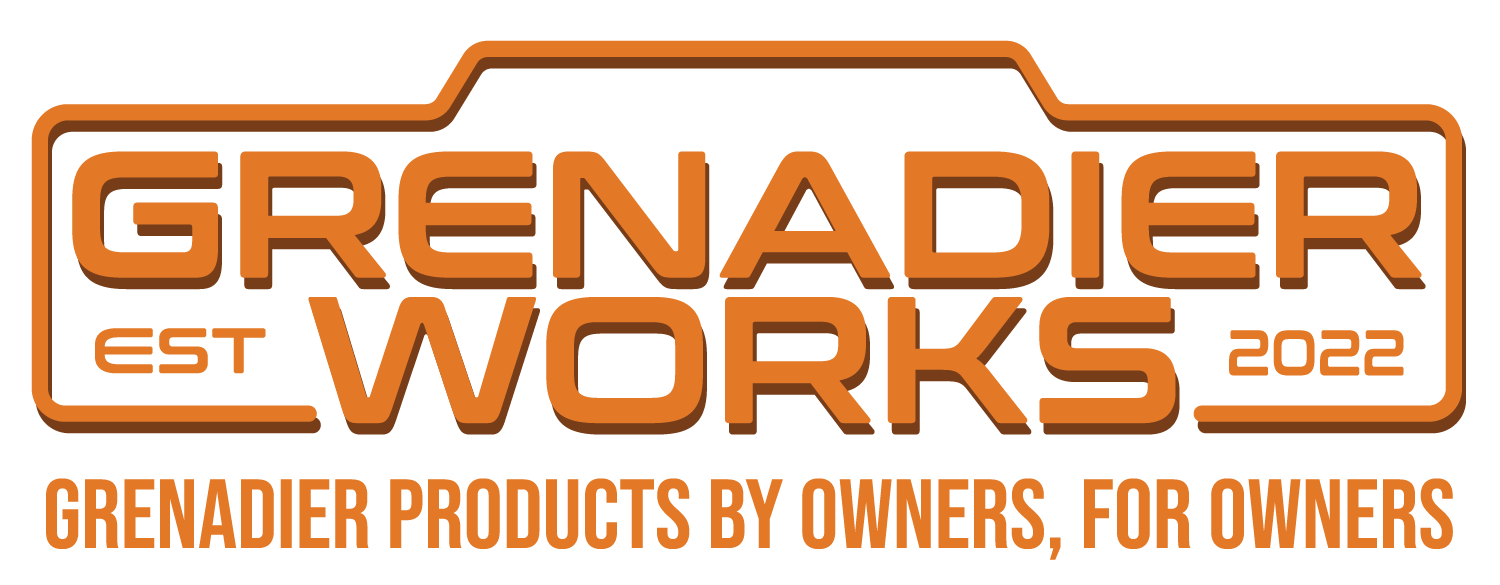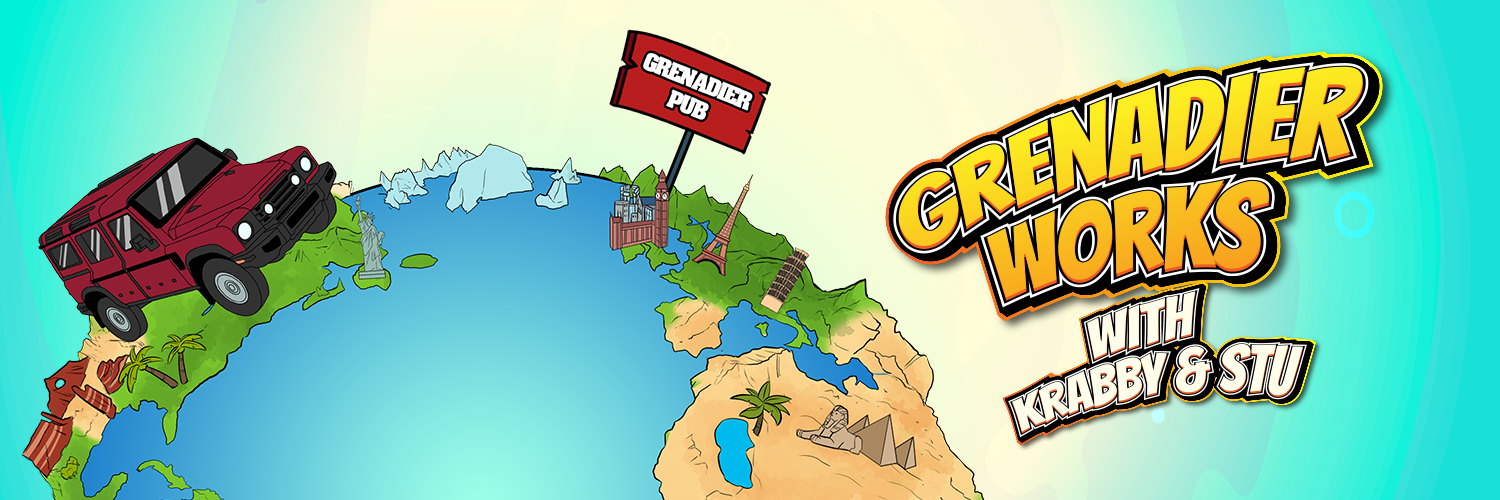Which UK reg’ would it infringe on?I really dislike our Plastic version. Would be happy to fit the XLW one, but I realise it won't comply with UK law, so will probably pass.
The Grenadier Forum
Register a free account today to become a member! Once signed in, you'll be able to contribute to the community by adding your own topics, posts, and connect with other members through your own private inbox! INEOS Agents, Dealers or Commercial vendors please contact admin@theineosforum.com for a commercial account.
You are using an out of date browser. It may not display this or other websites correctly.
You should upgrade or use an alternative browser.
You should upgrade or use an alternative browser.
Your thought please.
- Thread starter dobberman19
- Start date
- Local time
- 1:08 AM
- Joined
- Dec 28, 2021
- Messages
- 813
The sale of unapproved steel bull bars has been banned since May 2007; older ones on an older vehicle are fine, (although the DoT would not recommend their fitment unless you can show they don't make the vehicle more dangerous on impact).

 www.gov.uk
www.gov.uk
Legality of a winch bumper is down to use case; for the Grenadier it could be a bit complicated as there is an approved version with a winch that has passed type approval, so your insurance 'should' quibble about a non-approved version, but might only check after an incident and then void your insurance, (which will give you a massive legal headache).
Your chances of crossing the path of a DVSA or police office with enough knowledge of vehicle standards to know the difference between legal and illegal fitment of winch bumpers or bullbars is small, but rises massively after you have been involved in an incident, especially if there is a fatality. There is a general MOT requirement not to have any sharp edges on your car, so anything added may fall foul of that.

Bull bars
Legality of a winch bumper is down to use case; for the Grenadier it could be a bit complicated as there is an approved version with a winch that has passed type approval, so your insurance 'should' quibble about a non-approved version, but might only check after an incident and then void your insurance, (which will give you a massive legal headache).
Your chances of crossing the path of a DVSA or police office with enough knowledge of vehicle standards to know the difference between legal and illegal fitment of winch bumpers or bullbars is small, but rises massively after you have been involved in an incident, especially if there is a fatality. There is a general MOT requirement not to have any sharp edges on your car, so anything added may fall foul of that.
Hmmm and what’s the definition of a bull bar according to the DVSA?
Typical government bullshit
Typical government bullshit
Was thinking more about the XLW or Owl bumpers, rather than bull bars which in the UK, for obvious reasons, have been out of fashion for some time.The sale of unapproved steel bull bars has been banned since May 2007; older ones on an older vehicle are fine, (although the DoT would not recommend their fitment unless you can show they don't make the vehicle more dangerous on impact).

Bull bars
www.gov.uk
Legality of a winch bumper is down to use case; for the Grenadier it could be a bit complicated as there is an approved version with a winch that has passed type approval, so your insurance 'should' quibble about a non-approved version, but might only check after an incident and then void your insurance, (which will give you a massive legal headache).
Your chances of crossing the path of a DVSA or police office with enough knowledge of vehicle standards to know the difference between legal and illegal fitment of winch bumpers or bullbars is small, but rises massively after you have been involved in an incident, especially if there is a fatality. There is a general MOT requirement not to have any sharp edges on your car, so anything added may fall foul of that.
When is a bumper a bull bar? I wish they’d tell us.
Yeah I’m not after a bull bar, just a steel bumper, winch or not yet to be decided but I’d leave the option open. As close to standard looking as possible.
No clue - I guess by implication you think it would be legal to fit one. I notice from XLW's website their front bumper was being displayed at an Ineos event.Which UK reg’ would it infringe on?
Tempted....
- Local time
- 1:08 AM
- Joined
- Dec 28, 2021
- Messages
- 813
The UK is different to the rest of Europe, as you can fit anything in the aftermarket, so long as it is not "dangerous", with the Courts to decide what dangerous means. In Germany, it is simple, no TUV approval, no fitment.
So, you can fit what you like, so long as it does not add sharp edges, (the MOT tester problem, as they have to fail vehicles with edges that might be a hazard to pedestrians), and your insurance agrees and you told them all they needed to know, (and they get to decide, sometimes in retrospect, what they wanted to know). Fitting it is not the usual problem; the aftermath of an incident is the problem, as any insurance claims assessor should pick up that your steel bumper/bull bar/ winch bumper/ non-"E" marked appendige is a change from vehicle standard, so should be explicitly on the insurance proposal. You will have signed a declaration that your vehicle is legal to be on UK roads, (which implies all you have added is "E" marked, or otherwise approved for road use), so the insurance company has a decision to make, meet the claim or repudiate cover. The size of the likely claim is the big driver here, so a fatality or life changing injuries will increase the chances of insurance company push back.
Any trip to the High Court starts at £100k, so defending your bumper choices can come expensive, even if the Court agrees with you.
So, you can fit what you like, so long as it does not add sharp edges, (the MOT tester problem, as they have to fail vehicles with edges that might be a hazard to pedestrians), and your insurance agrees and you told them all they needed to know, (and they get to decide, sometimes in retrospect, what they wanted to know). Fitting it is not the usual problem; the aftermath of an incident is the problem, as any insurance claims assessor should pick up that your steel bumper/bull bar/ winch bumper/ non-"E" marked appendige is a change from vehicle standard, so should be explicitly on the insurance proposal. You will have signed a declaration that your vehicle is legal to be on UK roads, (which implies all you have added is "E" marked, or otherwise approved for road use), so the insurance company has a decision to make, meet the claim or repudiate cover. The size of the likely claim is the big driver here, so a fatality or life changing injuries will increase the chances of insurance company push back.
Any trip to the High Court starts at £100k, so defending your bumper choices can come expensive, even if the Court agrees with you.
Are the regulations in all EU markets similar in regards to fitting such accessories? What market is XLW targeting if it’s so hard to to fit them legally in the EU?The UK is different to the rest of Europe, as you can fit anything in the aftermarket, so long as it is not "dangerous", with the Courts to decide what dangerous means. In Germany, it is simple, no TUV approval, no fitment.
So, you can fit what you like, so long as it does not add sharp edges, (the MOT tester problem, as they have to fail vehicles with edges that might be a hazard to pedestrians), and your insurance agrees and you told them all they needed to know, (and they get to decide, sometimes in retrospect, what they wanted to know). Fitting it is not the usual problem; the aftermath of an incident is the problem, as any insurance claims assessor should pick up that your steel bumper/bull bar/ winch bumper/ non-"E" marked appendige is a change from vehicle standard, so should be explicitly on the insurance proposal. You will have signed a declaration that your vehicle is legal to be on UK roads, (which implies all you have added is "E" marked, or otherwise approved for road use), so the insurance company has a decision to make, meet the claim or repudiate cover. The size of the likely claim is the big driver here, so a fatality or life changing injuries will increase the chances of insurance company push back.
Any trip to the High Court starts at £100k, so defending your bumper choices can come expensive, even if the Court agrees with you.
That is a very, very complex issue. It all depends on the first vehicle registration for a specific vehicle model by the manufacturer and to which regulations, additions and versions they have choosen to apply to. Then, some manufacturers keep these base regulations for decades (like Land Rover with the Defender), others choose to switch the base regulations within a vehicle line (like Mercedes-Benz with the Sprinter 90x,). The regulations which were used and which apply to your version of the vehicle (choosen by the manufacturer) are the ones which decide what you can do and what not. And these can vary. The single regulations are the same in all addected countries...you need to look into the papers and check the vehicle registration type code to encrypt to know which regulations do apply.
AWo
AWo
Similar threads
- Replies
- 2
- Views
- 616
- Replies
- 25
- Views
- 1K
- Replies
- 294
- Views
- 17K



